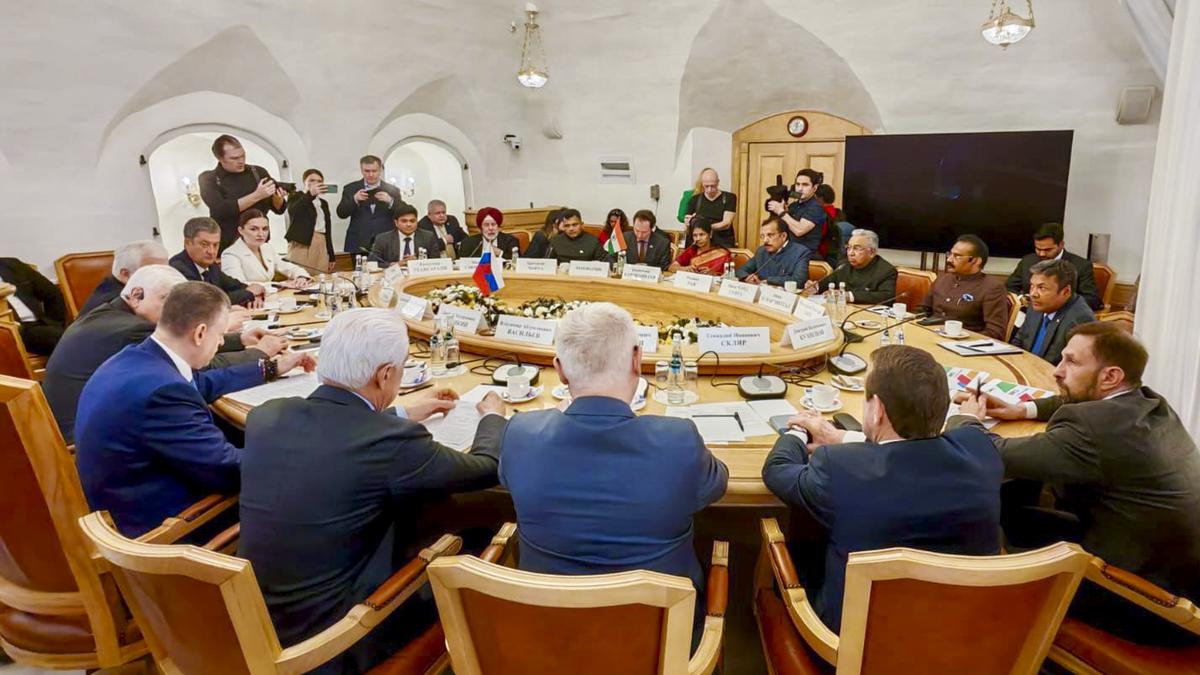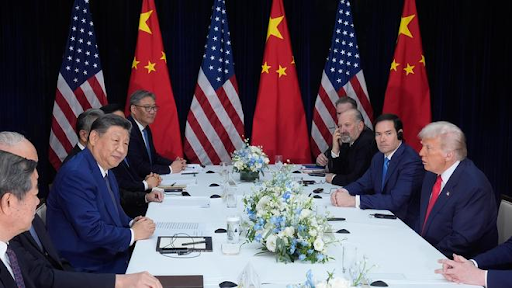



Following "Operation Sindoor," India's all-party diplomatic missions successfully clarified its anti-terror stance globally. This outreach highlighted the power of national unity in foreign policy, the effectiveness of clear communication in countering misinformation, and the strategic importance of blending technology, trade, and tradition to advance India's interests on the world stage.

Copyright infringement not intended
Picture Courtesy: THE HINDU
United diplomatic outreach post-"Operation Sindoor" offers key lessons for future foreign policy.
Narrative Control => To explain the rationale behind military action, present it as a legitimate, targeted, and measured act of self-defense against cross-border terrorism.
Countering Misinformation => To correct false narratives, as seen in the example of convincing Colombia to retract its initial statement about civilian casualties.
Building Consensus => To highlight the continuous threat of terrorism from Pakistan and build a global consensus to hold state sponsors accountable.
Asserting India's Stance => To express that while India is focused on its own growth and desires peace, it maintains the resolve to retaliate against any aggression.
Power of a Unified National Voice => The use of all-party delegations is a powerful tool. When Members of Parliament from across the political spectrum speak in unison on matters of national security, it demonstrates that India's core foreign policy is not subject to domestic political divisions.
Proactive Public Diplomacy => A narrative vacuum is dangerous and is quickly filled by misinformation. Experts stress the need for consistent and intensive engagement with foreign lawmakers, think tanks, and media. Real-world diplomacy increasingly uses these methods. For example, during the COVID-19 pandemic, the "Vaccine Maitri" initiative was a powerful act of public diplomacy.
Leveraging Soft Power => India's cultural heritage is a significant strategic asset. India's soft power, which includes yoga, cinema (Bollywood), cuisine, and democratic values, provides a unique and effective pathway to connect with global audiences and build goodwill. India's successful campaign to have the UN recognize an International Day of Yoga is a prime example of this.
Tradition => Continue to use India's rich cultural heritage and democratic values as a tool of soft power to foster understanding and build relationships.
Technology => Move beyond being a leader in IT services to becoming a hub for technological innovation and product development, especially in fields like Artificial Intelligence (AI). This positions India as a source of solutions for global challenges.
Trade => Expand and diversify trade relationships. Strong economic partnerships are fundamental to both national development and strategic influence in an increasingly competitive world.
Deepen Engagement with the Americas => Increase high-level visits and diplomatic presence in South and Central American nations.
Strengthen Multilateral Engagement => Proactively use platforms like the United Nations to address the issue of terrorism and directly engage with international media and officials to present India's perspective.
Prioritize Key Partnerships => Nurture relationships with major partners like Brazil, especially within forums such as BRICS.
Secure Strategic Interests => Actively engage with emerging players like Guyana to safeguard India's interests in new sectors like energy.
|
Modern statecraft requires a seamless blend of hard power and soft power. While military readiness is essential for security, it must be complemented by a sophisticated, unified, and proactive public diplomacy strategy. By effectively communicating its narrative, India can navigate the complexities of the global landscape and achieve its strategic objectives. |
Must Read Articles:
Source:
|
PRACTICE QUESTION Q. What was the codename for the Indian military operation launched in response to the Pahalgam terror attack? A) Operation Vijay B) Operation Meghdoot C) Operation Sindoor D) Operation Blue Star Answer: C Explanation: The military campaign launched by India was codenamed Operation Sindoor. |




© 2026 iasgyan. All right reserved